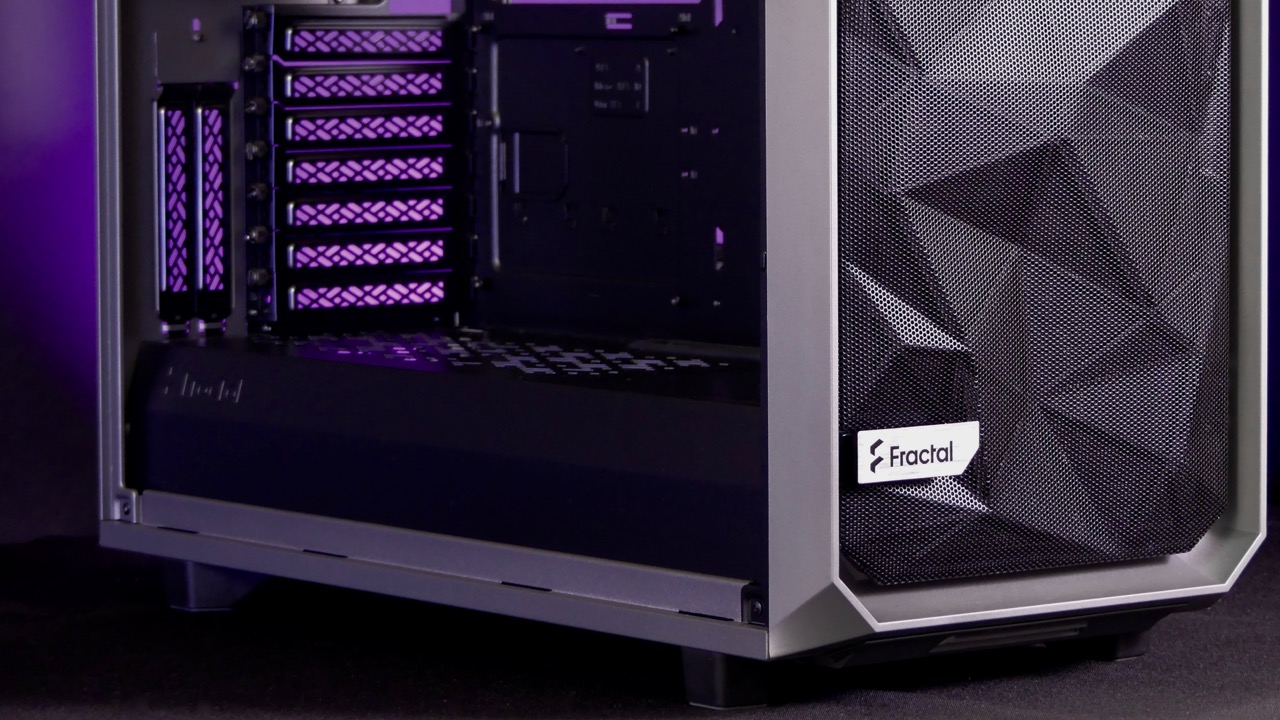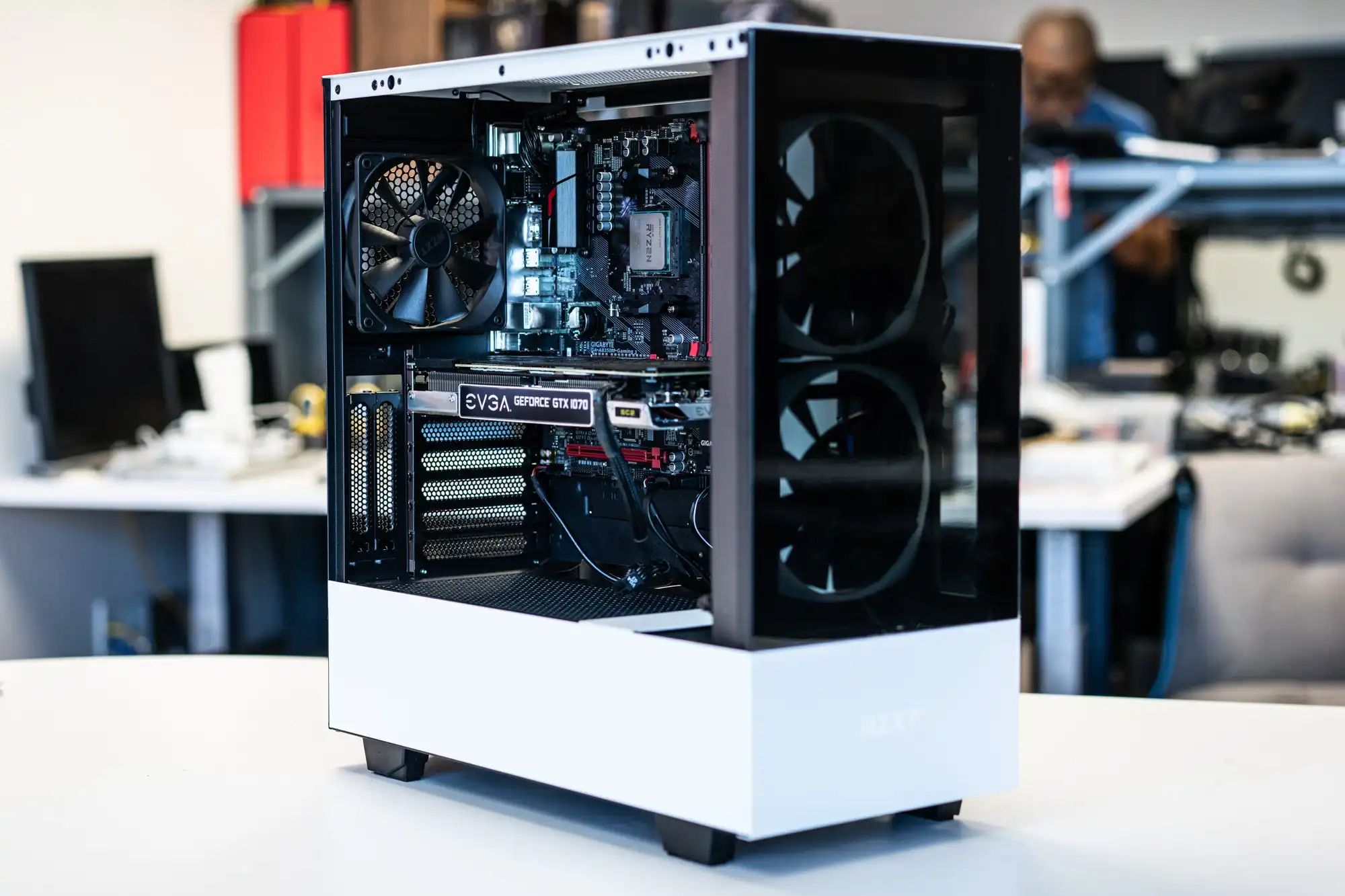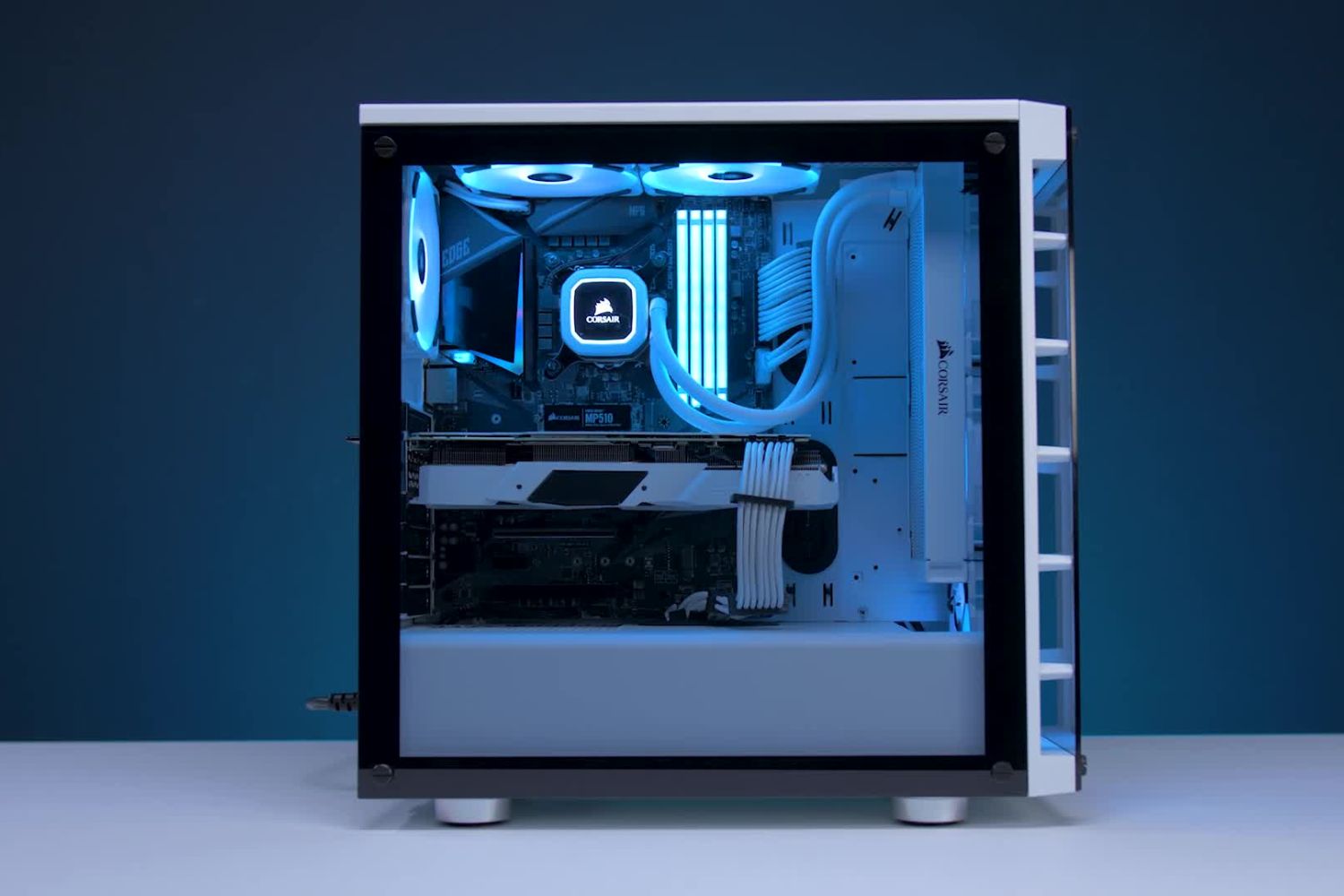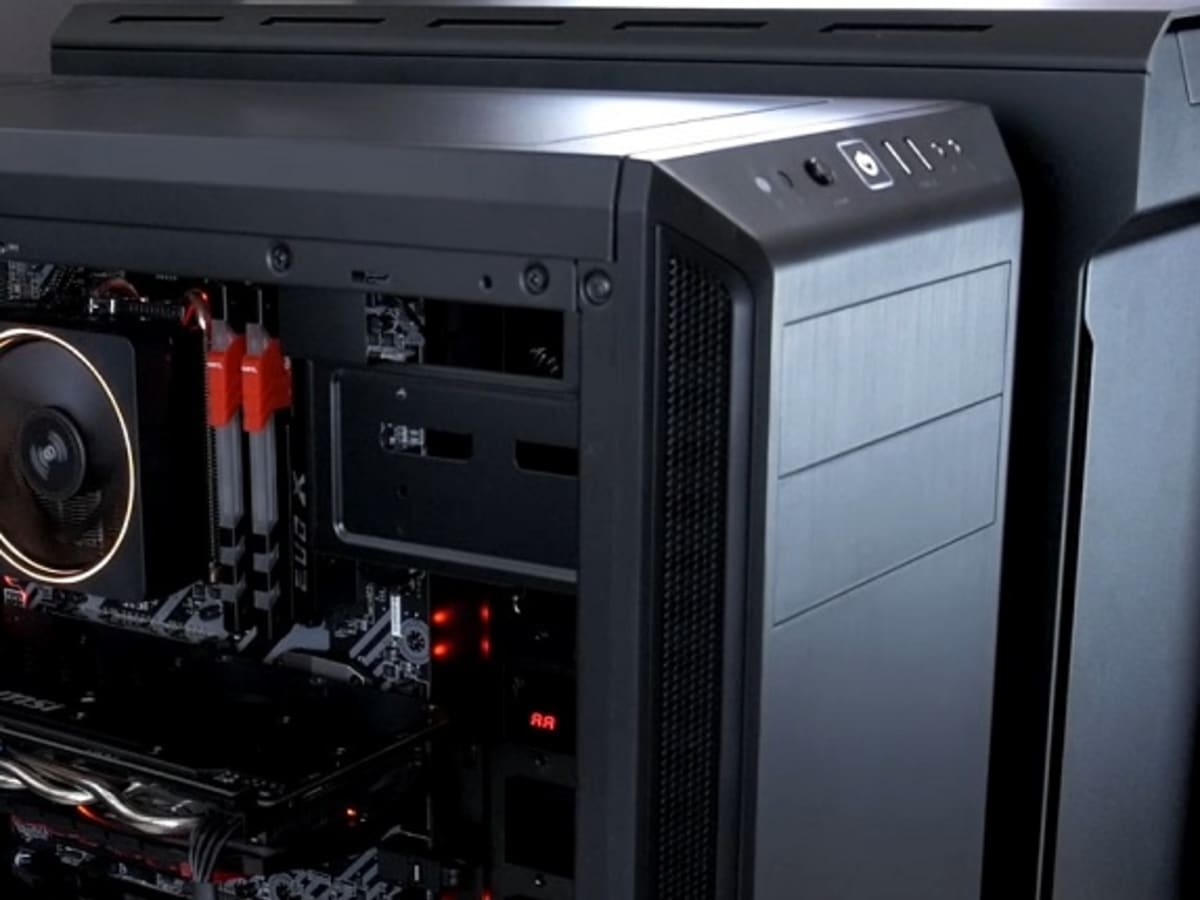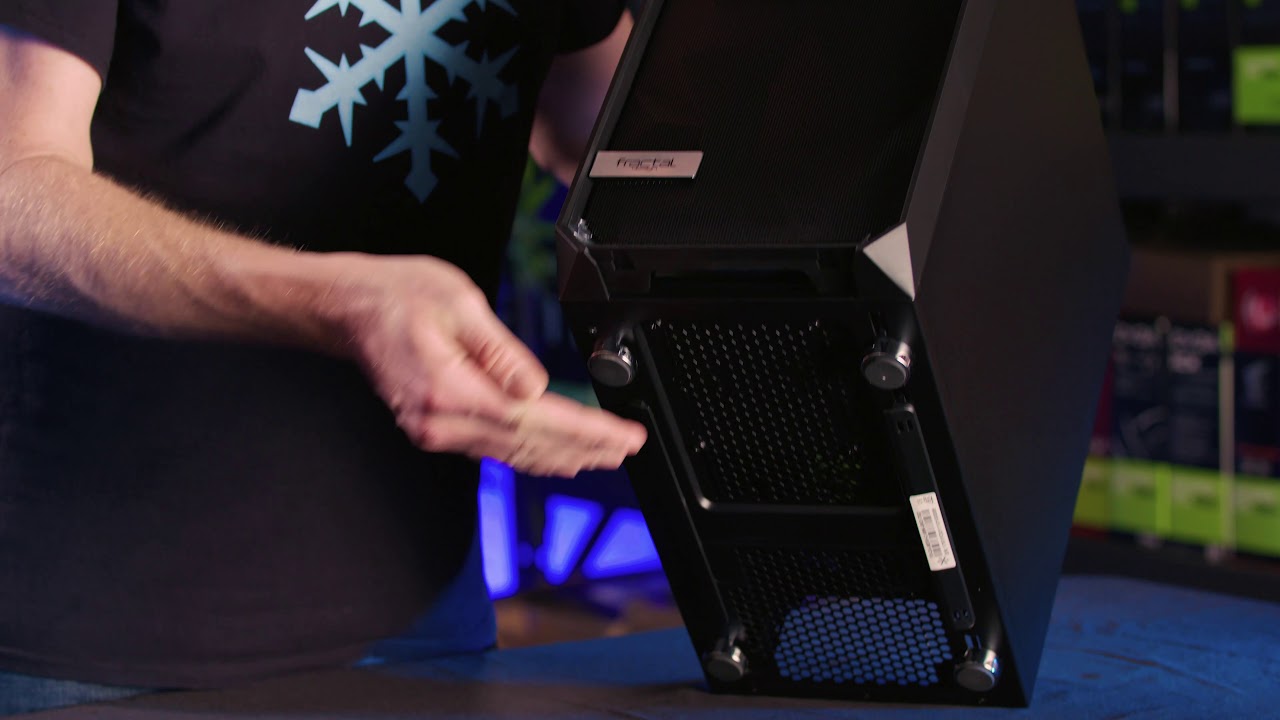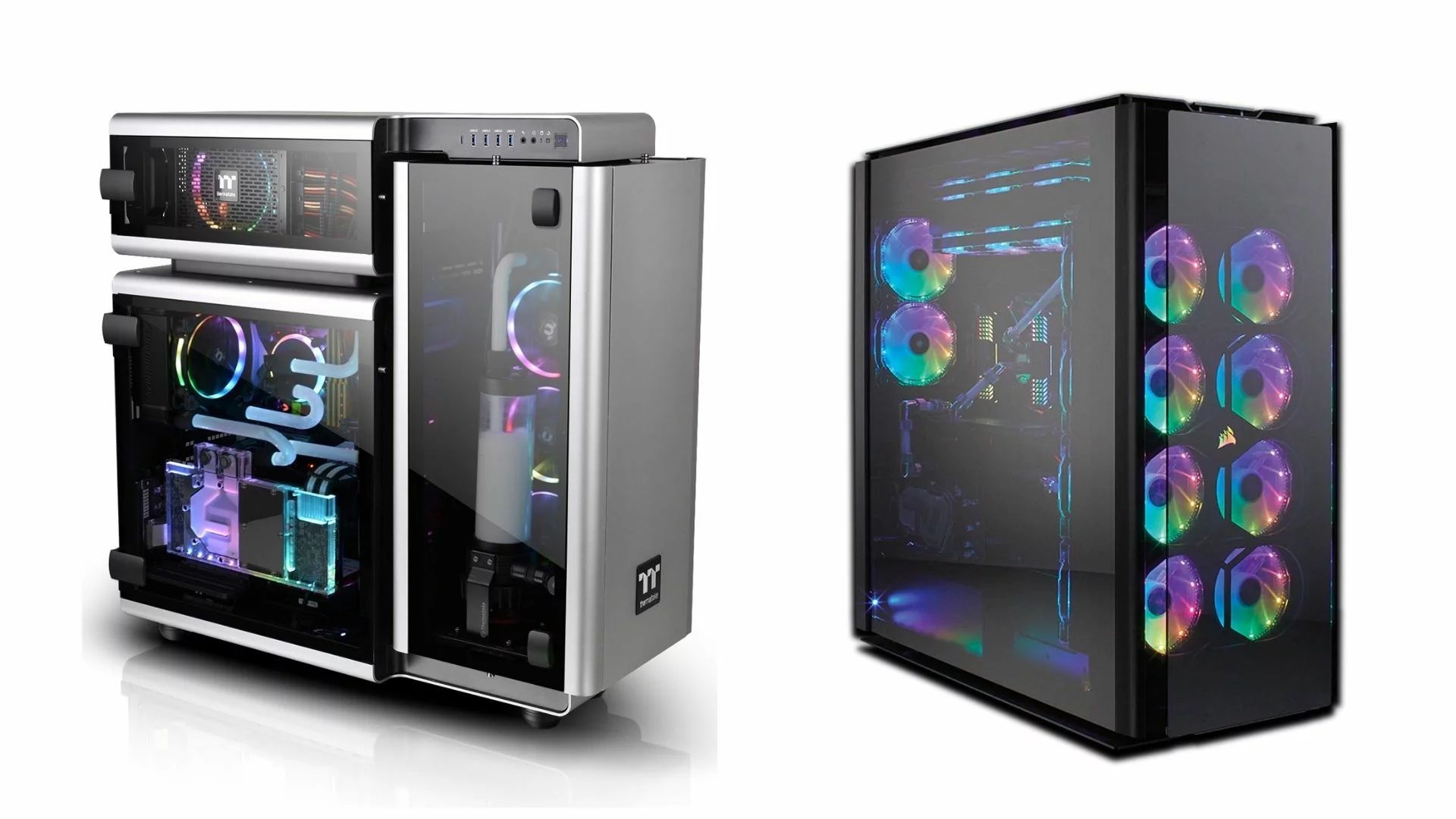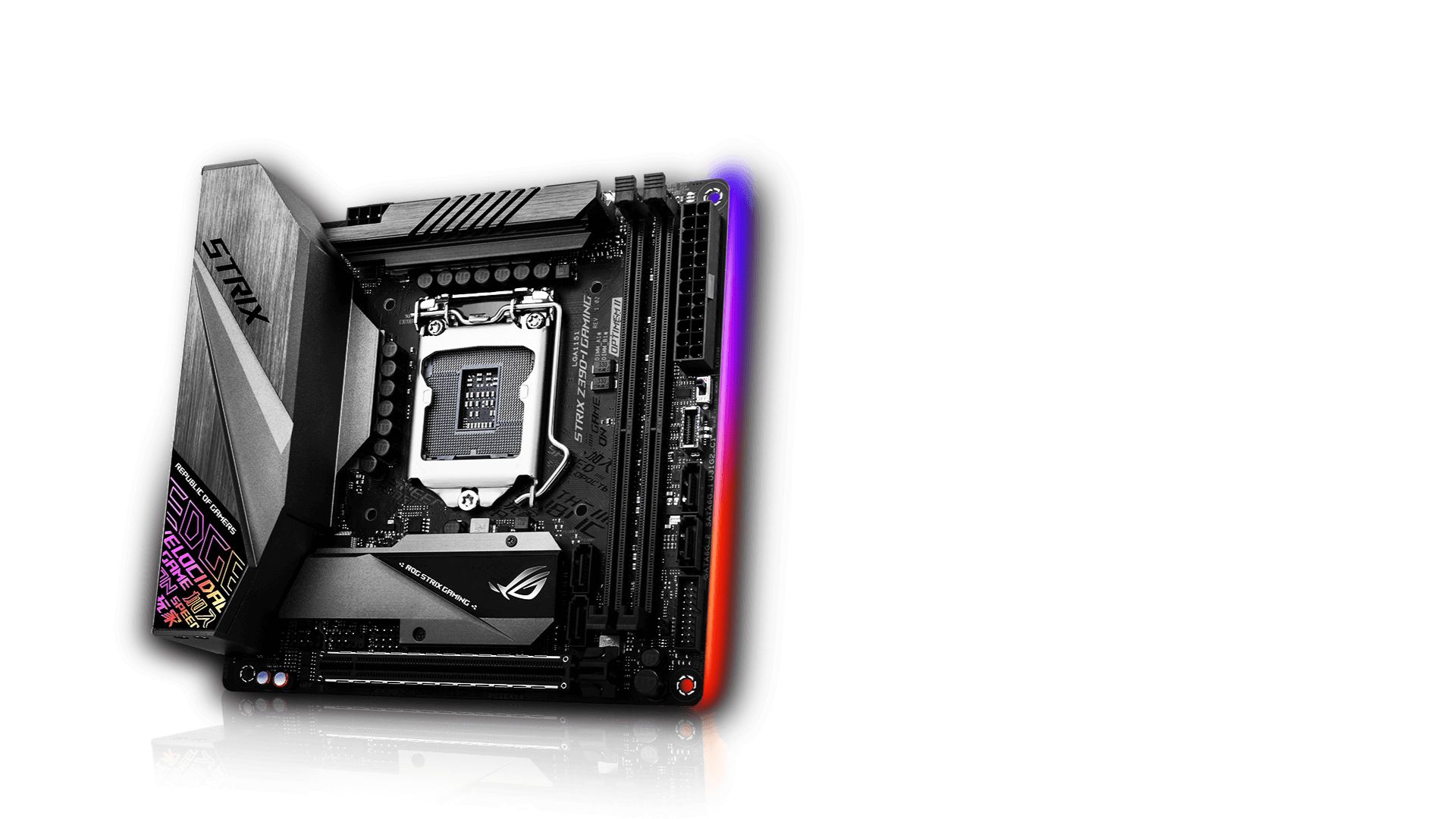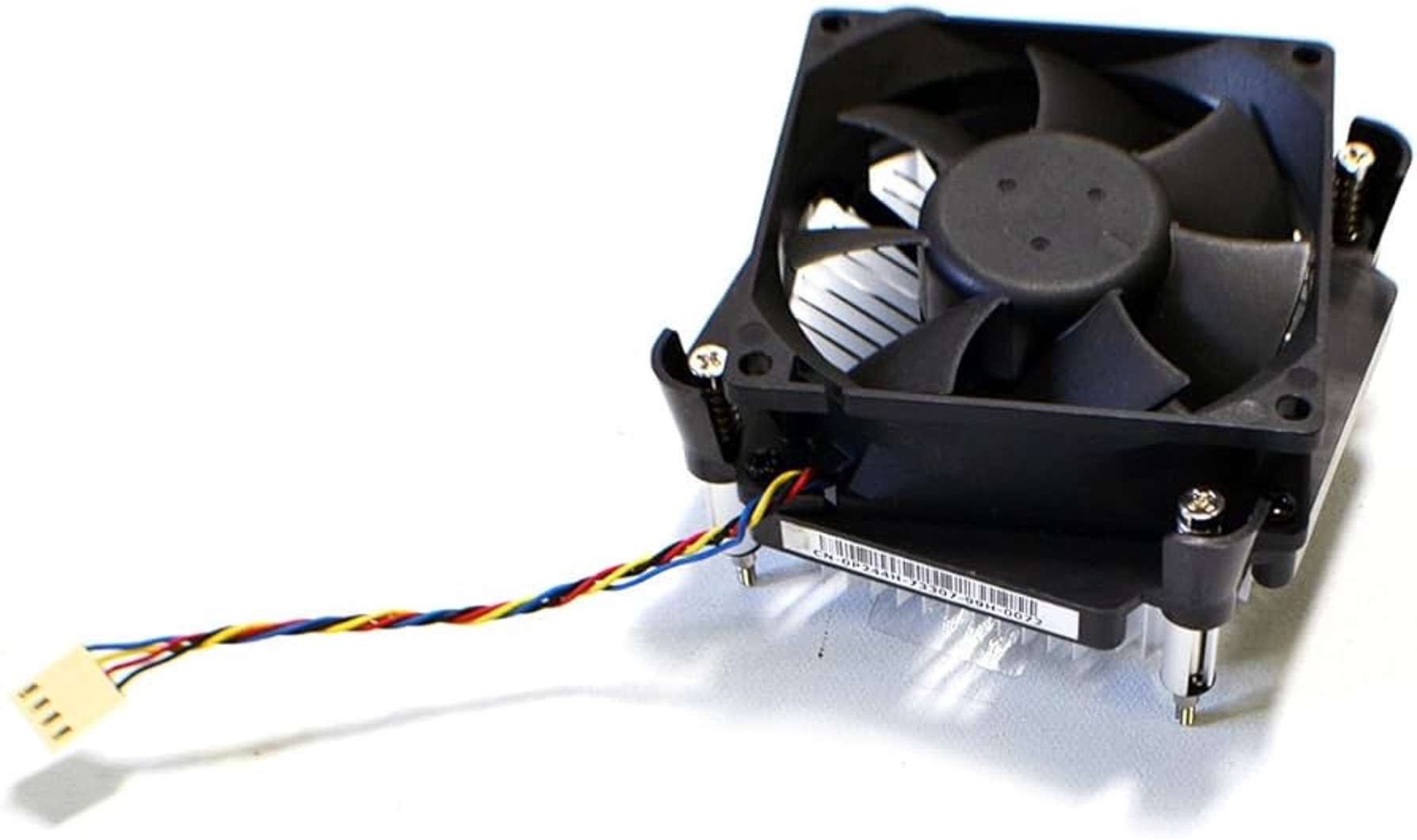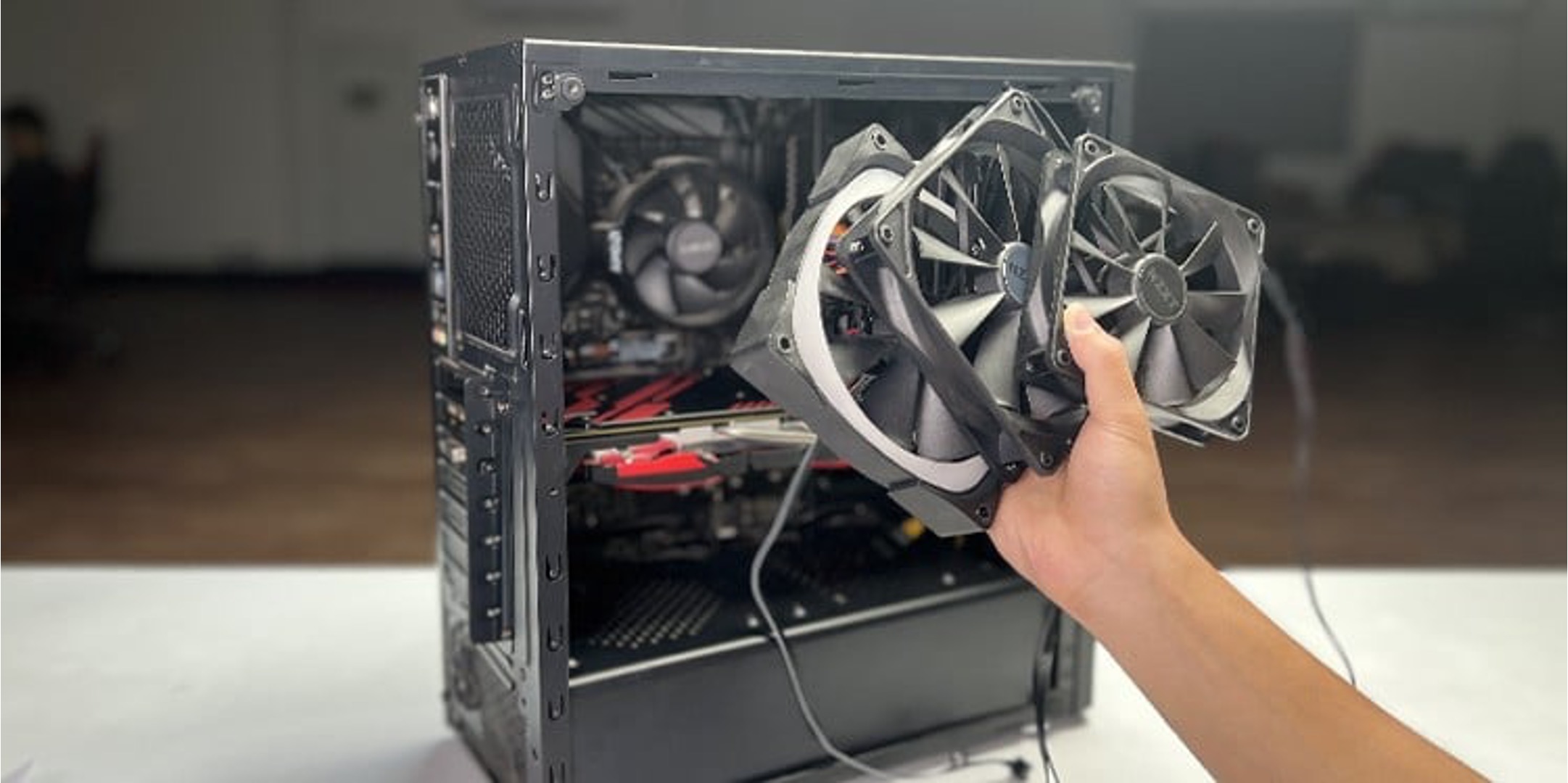Introduction
Welcome to our article on finding the perfect case fan size for the Meshify case. If you’re a PC enthusiast or a passionate gamer, you know the importance of keeping your system cool and well-ventilated.
Case fans play a crucial role in maintaining optimal temperatures inside your computer. They help to dissipate heat generated by the components, such as the CPU and GPU, ensuring that your system operates smoothly and efficiently.
In this article, we will focus specifically on the popular Meshify case, known for its exceptional airflow characteristics. We will guide you through the process of determining the suitable case fan sizes for this case, and offer some tips on installation to help you achieve maximum cooling performance.
Before we dive into the specifics of the Meshify case and the different fan sizes, let’s take a moment to understand why case fans are so important.
While many components in your computer generate heat, they can also be affected by excessive heat. Overheating may lead to system instability, reduced lifespan of components, or even complete system failure. This is where case fans come in, as they help to regulate and control the internal temperatures of your PC.
Case fans are responsible for drawing cool air into the case and expelling hot air out. By creating a steady airflow, they keep the internal components within their recommended temperature range, preventing thermal throttling and potential damage.
Not only do case fans provide cooling benefits, but they also contribute to noise reduction. By effectively dissipating heat, the fans allow your system to operate at lower temperatures and with less strain on the components, reducing the need for noisy fan speeds.
Now that we’ve examined the importance of case fans, let’s move on to understanding the design of the Meshify case and how it affects the choice of fan sizes.
Why Case Fans Matter
Case fans play a crucial role in maintaining the overall performance and longevity of your computer system. They are not just an optional accessory, but an essential component that should not be overlooked. Here are a few key reasons why case fans matter:
Temperature Control: The primary purpose of case fans is to regulate the internal temperature of your computer. As components such as the CPU and GPU generate heat during operation, case fans help to dissipate that heat by circulating cool air into the case and expelling hot air out. This helps to prevent overheating, which can lead to system instability, performance degradation, and even hardware failure.
Improved Performance: By keeping your system cool, case fans contribute to improved performance. Excessive heat can cause components to throttle, reducing their efficiency and potentially causing lag or slowdowns in demanding tasks like gaming or video editing. With proper cooling from case fans, your components can operate at their optimal performance levels, ensuring smooth and uninterrupted operation.
Longevity of Components: Overheating can significantly shorten the lifespan of your computer components. High temperatures can cause stress on sensitive electronic parts, leading to premature wear and potential malfunctions. By maintaining a consistently cool environment within your case, case fans help to extend the longevity of your components, saving you the cost and hassle of frequent replacements.
Dust Reduction: Case fans also assist in keeping your system clean by reducing the buildup of dust and debris. Dust accumulation can restrict airflow, leading to higher temperatures and decreased performance. Case fans work by constantly circulating air, which helps to prevent dust from settling on the components and filters out particles through the use of dust filters. Regular cleaning and maintenance of your case fans can further prevent dust-related issues.
In summary, case fans are vital for temperature regulation, improved performance, and the overall longevity of your computer system. They not only help to keep your components cool but also contribute to a cleaner and more efficient system. Now that we understand the significance of case fans, let’s move on to exploring how the design of the Meshify case impacts the choice of case fan sizes.
Understanding the Meshify Case Design
Before we delve into the specific case fan sizes for the Meshify case, it’s important to have a clear understanding of its design and airflow characteristics. The Meshify case, produced by Fractal Design, is known for its focus on high airflow and efficient cooling.
The Meshify case features a unique mesh front panel design, which allows for maximum airflow into the case. This mesh panel is composed of small holes that facilitate the intake of cool air while filtering out larger dust particles. The mesh design ensures unobstructed airflow, reducing the chances of hot spots within the case.
In addition to the mesh front panel, the Meshify case also incorporates strategic ventilation points throughout its design. This includes ventilation holes on the top and rear of the case, promoting the efficient expulsion of hot air. The combination of the mesh front panel and strategic ventilation points creates a balanced airflow pattern, promoting optimal cooling performance.
Another noteworthy feature of the Meshify case is its compact and efficient layout. Despite its compact size, it offers ample space for installing multiple case fans. This allows for flexibility in configuring your cooling setup based on your specific needs and preferences.
It’s important to consider the design of the Meshify case when choosing the appropriate case fan sizes. The mesh front panel and ventilation points require fans that can efficiently pull in cool air and expel hot air without obstruction. Inadequate fan sizes may result in suboptimal cooling performance, potentially leading to higher temperatures and compromised system stability.
In the next section, we will explore the factors to consider when selecting case fans for the Meshify case, ensuring that you make an informed decision to achieve the best cooling outcomes.
Determining the Size of Case Fan Needed for the Meshify
Choosing the right size of case fan for your Meshify case is crucial to ensure optimal airflow and cooling performance. The size of the case fan refers to its diameter, typically measured in millimeters (mm). To determine the appropriate fan size for your Meshify case, there are a few factors to consider:
Available fan mounting points: Start by identifying the available fan mounting points in your Meshify case. This will vary depending on the specific model of the Meshify case you have. Common mounting points include the front panel, rear panel, top panel, and side panel. Check the specifications and user manual of your Meshify case to identify the exact number and size of the fan mounting points.
Maximum allowed fan size: Once you have identified the fan mounting points, determine the maximum allowed fan size for each mounting point. This information can be found in the specifications of your Meshify case or in the user manual. The maximum allowed fan size will depend on the specific dimensions and design of your case. It is important to adhere to these maximum limits to ensure proper compatibility and prevent any potential clearance issues.
Airflow requirements: Assess your airflow requirements based on your system configuration and usage. Components such as high-performance CPUs and GPUs require more cooling capacity than lower-end components. If you have a more power-hungry system or engage in demanding tasks such as gaming or content creation, you may need larger case fans or additional fans for better airflow and heat dissipation.
Budget and noise considerations: Consider your budget and noise preferences when selecting the size of case fans. Larger fans tend to have better cooling performance but can be more expensive. Additionally, larger fans generally run at lower RPMs, leading to quieter operation. However, if you are on a tight budget or noise is a concern, smaller fans can still provide sufficient cooling performance at a lower cost and potentially with less noise.
Compatibility with other components: Finally, ensure that the chosen case fan size is compatible with other components in your system. Check for any potential clearance issues with components such as CPU coolers or RAM modules. Make sure there is enough space for the case fans to be installed without obstructing other parts of your build.
By considering these factors and understanding the available fan mounting points and restrictions of your Meshify case, you can determine the appropriate size of case fan needed for optimal cooling performance. In the next section, we will discuss the different types of case fans available on the market to further assist you in making an informed decision.
Factors to Consider When Choosing Case Fans
When selecting case fans for your Meshify case, there are several important factors to consider. These factors will help you choose the right case fans that match your cooling requirements and ensure efficient and effective airflow. Let’s explore these factors in detail:
Airflow and static pressure: Consider the airflow and static pressure ratings of the case fans. Airflow refers to the volume of air the fan can move in a given time, while static pressure is the force the fan can exert to overcome resistance. Higher airflow and static pressure ratings can provide better cooling performance, especially if you have components that generate a significant amount of heat.
Noise level: Pay attention to the noise level of the case fans, especially if noise is a concern for you. Fans with lower decibel (dB) ratings produce quieter operation, while higher dB ratings may result in more audible fan noise. Look for fan specifications or reviews that indicate noise levels to find fans that strike a good balance between cooling performance and noise output.
Fan speed: Fan speed, measured in revolutions per minute (RPM), determines how fast the fan blades spin. Higher fan speeds generally result in better cooling performance but can also lead to increased noise levels. Consider the fan speed that aligns with your cooling needs and noise preferences.
Bearing type: Case fans come with different types of bearings, including sleeve, ball, and fluid dynamic bearings. Each bearing type has its advantages and disadvantages in terms of noise levels, lifespan, and cost. Choose a bearing type that matches your requirements in terms of noise, durability, and budget.
Fan control options: Some case fans offer built-in fan control options, allowing you to adjust the fan speed and customize the cooling performance. These can be particularly useful if you want to fine-tune the fan speed based on your specific needs, temperature fluctuations, or noise preferences.
RGB lighting: If aesthetics are important to you, consider case fans with RGB lighting options. RGB fans can add a vibrant and personalized touch to your build, allowing you to match your setup’s color scheme and create dynamic lighting effects.
Budget: Finally, consider your budget when choosing case fans. Higher-quality fans often come at a higher price point, but they may provide better performance, quieter operation, and greater durability. Assess your cooling requirements and allocate a budget accordingly to find the best balance between performance and cost.
By carefully considering these factors, you can select case fans that meet your specific needs and align with your cooling goals. In the next section, we will explore the different types of case fans available on the market to further assist you in making an informed choice for your Meshify case.
Different Types of Case Fans Available
When it comes to choosing case fans for your Meshify case, there are several different types available on the market. Each type offers unique features and benefits, catering to different cooling requirements and personal preferences. Let’s take a closer look at the different types of case fans:
1. Standard Case Fans: Standard case fans are the most common type and come in various sizes, such as 120mm and 140mm. They provide a good balance between airflow, static pressure, and noise levels. Standard case fans are suitable for general cooling purposes and are widely compatible with different case models, including the Meshify.
2. High-Performance Fans: High-performance fans are designed with an emphasis on maximum airflow and static pressure. These fans often have larger diameters, such as 200mm, and run at higher speeds to move larger volumes of air. They are ideal for systems with high heat-generating components and those that require superior cooling performance.
3. Silent Fans: Silent fans prioritize low noise levels while still providing adequate airflow. These fans feature specialized designs, such as larger blades, improved bearing technology, and noise-dampening features. Silent fans are ideal for PC enthusiasts who value a quiet computing experience without compromising on cooling efficiency.
4. PWM Fans: PWM (Pulse Width Modulation) fans allow for dynamic control of fan speed with the help of PWM signals from the motherboard. These fans can adjust their speeds automatically based on temperature fluctuations, resulting in better energy efficiency and quieter operation. PWM fans are suitable for users who prefer optimal cooling control and want to minimize fan noise when the system is idle or under light loads.
5. RGB Fans: RGB fans add a touch of style and personalization to your setup. These fans come with built-in RGB lighting that can be customized to match your preferred color scheme or synced with other RGB components. RGB fans combine aesthetics with functionality, providing cooling performance along with eye-catching visual effects.
6. Dual-Function Fans: Dual-function fans offer a combination of features, such as customizable lighting effects, enhanced performance, or specific airflow patterns. These fans are designed to cater to specific requirements, such as improved cooling for radiators or optimized airflow for compact builds. They are a versatile option for users who desire unique features and performance benefits.
Each type of case fan has its own advantages and can contribute to effective cooling in your Meshify case. Consider your cooling needs, noise preferences, and aesthetics to choose the type of fan that best fits your requirements.
In the next section, we will provide recommended case fan sizes for the Meshify case to assist you in making an informed decision for your cooling setup.
Recommended Case Fan Sizes for the Meshify
When it comes to choosing case fan sizes for the Meshify case, it’s important to consider the available mounting points, airflow requirements, and compatibility with other components. Based on these factors, here are some recommended case fan sizes for the Meshify:
- 120mm Fans: 120mm fans are a popular choice for the Meshify case due to their versatility and compatibility. They can be mounted in various locations, such as the front, rear, top, or side panels. 120mm fans offer a good balance between airflow and noise levels, making them suitable for general cooling purposes.
- 140mm Fans: If your Meshify case has mounting points that can accommodate larger fans, consider using 140mm fans. These fans provide increased airflow and can move larger volumes of air, resulting in improved cooling performance. 140mm fans generally run at lower RPMs, resulting in quieter operation compared to their 120mm counterparts.
- 200mm Fans: If you’re looking for maximum airflow and cooling potential, consider using 200mm fans in your Meshify case. These fans can move a significant amount of air with their larger blades and are ideal for cooling high-performance systems. However, ensure that your case has appropriate mounting points and sufficient clearance to accommodate these larger fans.
- Combo Configurations: Another option to consider is using a combination of different fan sizes in your Meshify case. For example, you can install a 120mm or 140mm fan at the rear as an exhaust fan, while utilizing larger fans at the front for intake. This setup can help create a balanced airflow pattern and ensure efficient cooling across the entire case.
It’s important to note that these recommendations are not definitive and can vary based on your specific cooling requirements, case model, and personal preferences. Consider factors such as the heat generation of your components, noise reduction goals, and other specific needs when choosing the case fan sizes for your Meshify case.
Furthermore, please refer to the manufacturer’s documentation or user manual of your Meshify case for specific recommendations and limitations regarding fan sizes and configurations. This will ensure that you choose case fans that are compatible with your particular Meshify case model.
Now that you have an idea of the recommended case fan sizes, let’s move on to the next section where we will provide some tips on installing case fans in the Meshify case.
Tips for Installing Case Fans in the Meshify
Proper installation of case fans is crucial to maximize their effectiveness and ensure optimal cooling performance in your Meshify case. Here are some tips to keep in mind when installing case fans:
- Plan the airflow: Before installing case fans, plan the airflow inside your Meshify case. Generally, it’s recommended to have intake fans at the front or bottom of the case and exhaust fans at the rear or top. This setup helps to create a balanced airflow pattern that effectively moves cool air in and expels hot air out.
- Cable management: Pay attention to cable management to ensure unobstructed airflow. Neatly organize and secure cables, keeping them away from fan blades and critical airflow paths. This helps to minimize airflow obstructions and allows fans to operate at their full potential.
- Dust filters: If your Meshify case has dust filters, make sure to clean them regularly. Dust can accumulate on filters and impede airflow, reducing the cooling efficiency of your case fans. Follow the manufacturer’s instructions to remove and clean the filters, ensuring that your case fans can operate with optimal airflow and dust-free.
- Vibration dampening: To reduce noise and minimize vibration, consider using rubber or silicone dampeners between the case fans and the mounting points. These dampeners help to isolate the vibrations from the fans, resulting in quieter operation and reduced transmission of vibrations to the case chassis.
- Fan placement: Ensure that the fans are properly aligned and securely mounted. Improperly aligned fans or loose mounting can lead to rattling noises and reduced cooling efficiency. Follow the instructions provided by the fan manufacturer and use appropriate screws or mounting mechanisms to securely fasten the fans in place.
- Fan speed control: Consider using fan speed control options to adjust the RPM of your case fans. This can help fine-tune the cooling performance based on your specific needs, temperature fluctuations, or noise preferences. Connect the fans to the appropriate fan headers on your motherboard or utilize fan controllers for easy speed adjustment.
- Test and monitor: After installing case fans, run tests and monitor the temperatures of your components. Use software tools or BIOS settings to monitor the temperatures and observe any improvements in cooling performance. Adjust fan speeds or configurations if necessary to achieve the desired temperatures and noise levels.
Following these tips will ensure that your case fans are installed properly and effectively contribute to cooling your Meshify case and its components. Remember to always refer to the manufacturer’s guidelines and instructions when installing and configuring case fans.
Now that we’ve covered tips for case fan installation, let’s conclude the article with a summary of the key points discussed and a reminder to prioritize regular maintenance and cleaning to maintain optimal cooling performance in your Meshify case.
Conclusion
Ensuring proper cooling for your Meshify case is crucial for maintaining optimal performance and protecting your valuable components. Choosing the right case fan sizes, understanding the Meshify case’s design, and considering various factors when selecting case fans are key to achieving effective airflow and cooling. By following the recommended case fan sizes for the Meshify and installing them properly, you can create a well-ventilated and efficient system.
Remember to plan the airflow, manage cables, and clean dust filters regularly to maintain unobstructed airflow throughout your case. Additionally, consider factors such as noise levels, fan speed control, and vibration dampening to enhance your cooling setup’s performance and overall experience.
Keep in mind that the Meshify case offers flexibility in terms of fan sizes and mounting points. Whether you choose 120mm, 140mm, or larger fans, ensure compatibility with your specific case model and components. The goal is to strike the right balance between cooling efficiency, noise levels, and budget allocation.
Lastly, don’t forget to monitor your system’s temperatures and make adjustments as needed. With regular testing, monitoring, and maintenance, you can maintain optimal cooling performance and enjoy a stable and cool-running PC.
We hope that this article has provided you with valuable insights and guidance in choosing the appropriate case fan sizes for your Meshify case. By understanding the importance of case fans, considering the Meshify case’s design, and following the recommended tips, you can create an efficient and effective cooling system, keeping your components running smoothly for years to come.







